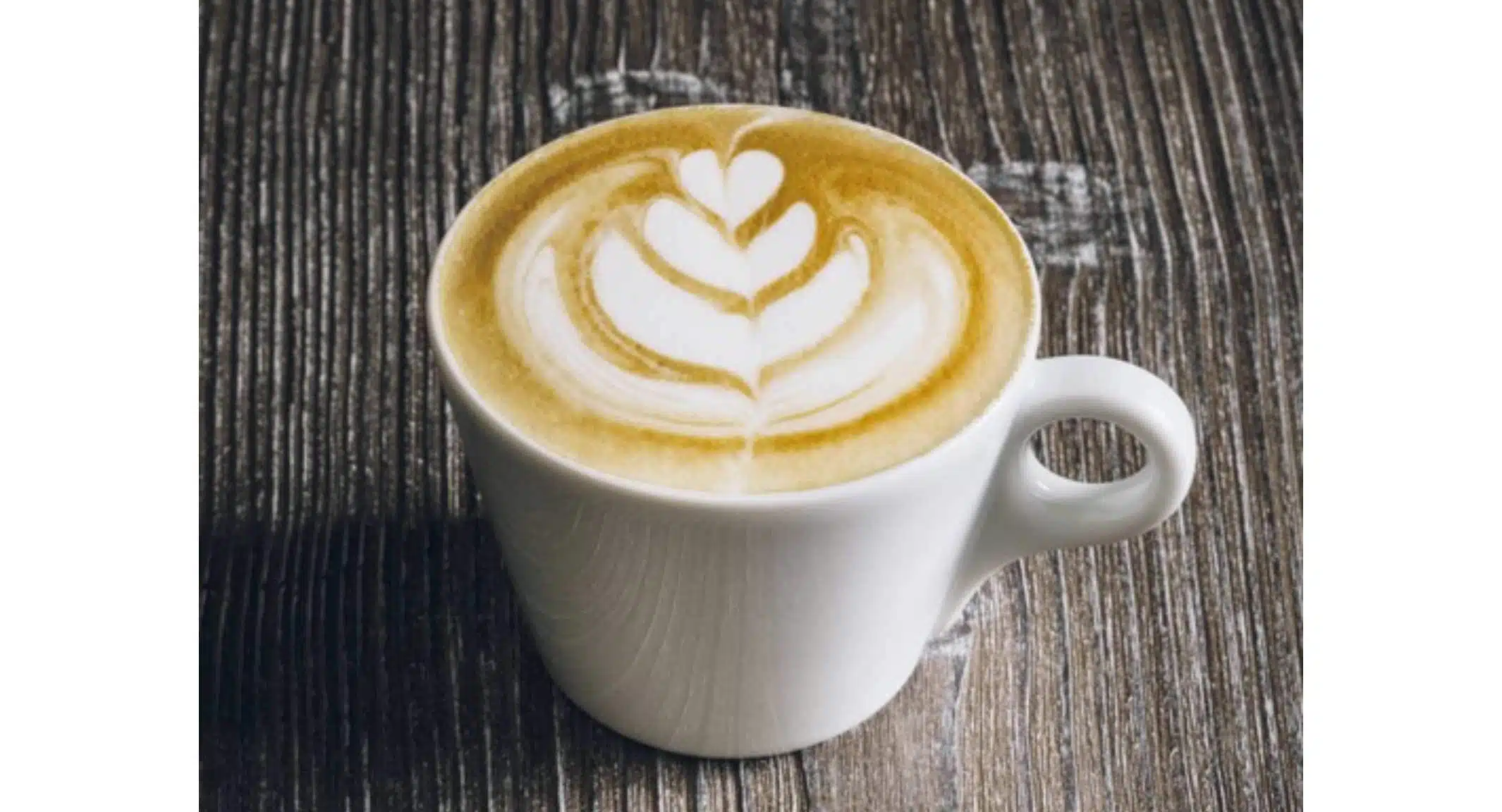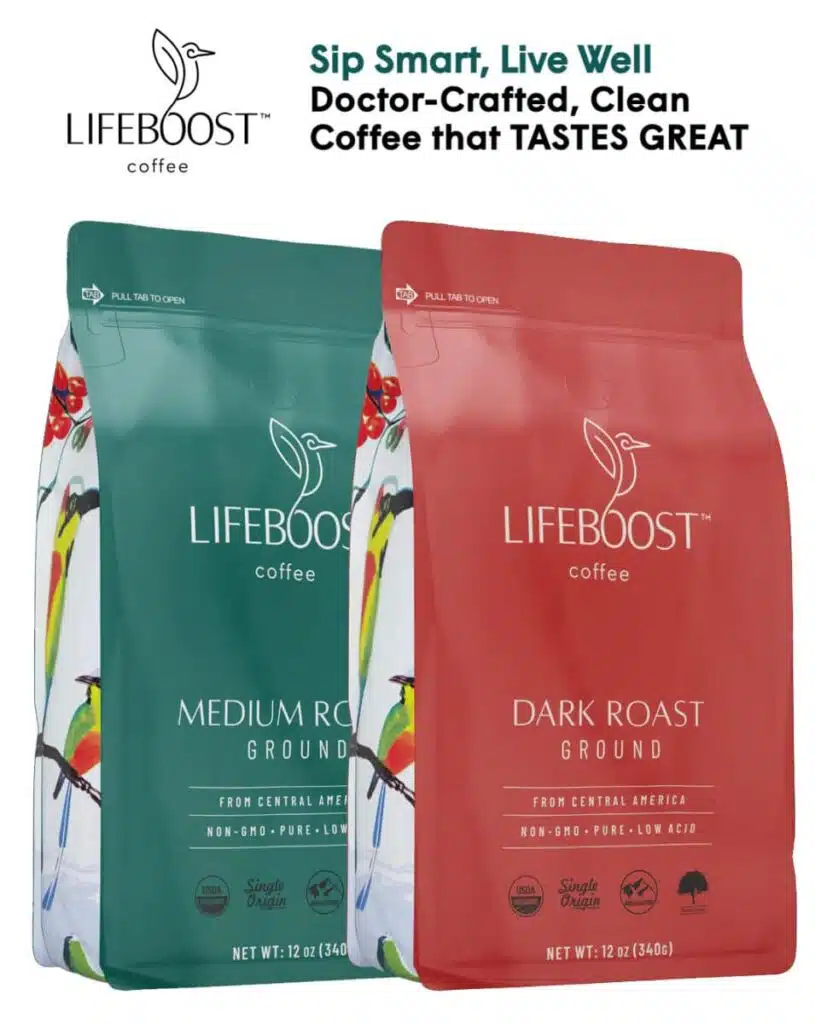The flat white, a beloved espresso-based coffee drink, has gained immense popularity in recent years. Originating from Australia and New Zealand, this delicious beverage combines rich espresso with velvety microfoam milk, creating a harmonious blend of flavors. In this guide, we’ll explore how to make a flat white, detailing the necessary ingredients and equipment, as well as the steps involved in crafting the perfect cup. Whether you’re a coffee enthusiast or a curious beginner, mastering this skill will elevate your coffee experience to new heights.
Introduction to Flat White
The flat white is a beloved coffee beverage that has captivated caffeine enthusiasts around the world. Originating from Australia and New Zealand in the 1980s, this drink combines espresso and velvety microfoam milk, creating a harmonious blend of flavors and textures.
What Sets Flat White Apart?
Unlike other espresso-based drinks, such as lattes and cappuccinos, the flat white features a higher coffee-to-milk ratio. This distinctive quality enhances the espresso’s robust flavor while maintaining a creamy mouthfeel. Notably, the flat white uses microfoam—steamed milk with finely textured bubbles—resulting in a silkier consistency compared to traditional frothed milk.
Key Characteristics of a Flat White
- Espresso Base: Typically made with a double shot of espresso.
- Microfoam: Carefully steamed milk creates a smoother texture.
- Volume: Served in smaller cups, usually around 5 to 6 ounces.
- Flavor: Offers a more intense coffee taste due to the reduced milk content.
The flat white’s simplicity and rich flavor profile make it a go-to choice for many coffee lovers. Understanding its unique characteristics is the first step in mastering the art of making your very own flat white.

History of the Flat White
The flat white originated in Australia and New Zealand during the 1980s, becoming a staple in coffee culture across both countries. While its exact beginnings are a matter of debate, it’s believed that the drink emerged as a response to the growing demand for specialty coffee.
Key points about its history include:
- Origins: Many attribute the creation to cafe owners in Sydney and Wellington, who sought a drink that blended espresso with velvety microfoam, setting it apart from lattes and cappuccinos.
- Evolution: Over the years, the flat white evolved, incorporating different milk frothing techniques and espresso brewing methods. This led to a drink that highlights the coffee’s rich flavor, complemented by creamy, textured milk.
- Global Expansion: By the early 2000s, the flat white made its way to the UK and eventually to the USA, where it gained popularity in third-wave coffee shops. Today, the flat white is celebrated worldwide, appealing to the palates of coffee enthusiasts.
In essence, the flat white is more than just a drink; it represents a unique blend of craftsmanship and culture within the coffee industry. Whether enjoyed at a local cafe or made at home, this beverage offers a delightful experience that continues to captivate coffee lovers across the globe.
Ingredients Needed for a Flat White
To create a perfect flat white, you’ll need just a few high-quality ingredients. This espresso-based drink is simple yet relies heavily on the essence of its components. Here’s what you should gather:
- Espresso Beans:
- 18-20 grams of freshly ground espresso beans. Opt for a medium roast to balance sweetness and acidity.
- Water:
- Filtered water is best for brewing, ensuring clean flavors in the espresso shot.
- Milk:
- 150-200 ml of whole milk is recommended as it froths beautifully, achieving that signature velvety texture. Alternatively, you can experiment with alternatives like oat or almond milk.
Bonus Tips for Selecting Ingredients
- Freshness is Key: Always use fresh beans, preferably roasted within the last two weeks.
- Quality Matters: Choose high-quality milk, as it significantly impacts the flavor and texture of your flat white.
- Temperature Control: Use cold milk straight from the fridge to prevent overheating during frothing.
By carefully selecting these ingredients, you’ll set the stage for making a delicious flat white that showcases the rich espresso and creamy, microfoam milk. The combination creates a delightful drink that stands out in the coffee world. Enjoy the process!
Equipment Required for Making a Flat White
To craft the perfect flat white, having the right equipment is essential. Below is a list of the equipment you will need to make an authentic flat white that rivals those from your favorite café.
- Espresso Machine: This is the heart of your flat white. A machine with a good pump pressure (9 bars) ensures optimal coffee extraction.
- Coffee Grinder: Freshly ground coffee beans significantly enhance flavor. A burr grinder is ideal for consistent grind size.
- Portafilter: Look for one that fits your espresso machine. It holds the ground coffee and is crucial for brewing a rich espresso base.
- Milk Frother or Steam Wand: To create the velvety microfoam essential for a flat white, you need a steam wand attached to your espresso machine or a standalone frothing pitcher.
- Digital Scale: Accuracy is key in making a flat white. Weighing your coffee and water helps maintain the perfect ratio for optimal flavor.
- Thermometer: This ensures your milk reaches the ideal temperature without scalding, which preserves its sweetness and texture.
With these tools at your disposal, you’ll be well-equipped to perfect your flat white preparation. The combination of equipment allows you to control every variable, from extraction to milk texture, ensuring each cup is a delightful experience.

Step-by-Step Guide to Making a Flat White
Creating the perfect flat white involves a precise process that highlights the rich flavors of the coffee and the texture of the milk. Follow these steps to craft an exceptional flat white at home:
Ingredients
- Double shot of espresso (around 2 ounces)
- Steamed milk (approximately 4 ounces)
Equipment
- Espresso machine
- Coffee grinder
- Milk frother (or steam wand)
- Thermometer (optional)
Steps
- Grind the Coffee:
- Use fresh coffee beans. Grind them to a fine consistency, similar to that of table salt.
- Prepare the Espresso:
- Tamp the ground coffee evenly into the portafilter.
- Brew a double shot of espresso into a pre-warmed cup.
- Steam the Milk:
- Pour cold milk into a steaming jug.
- Submerge the steam wand just below the surface and turn it on. Create a whirlpool effect to incorporate air, heating the milk to around 140°F-150°F.
- Achieve Microfoam:
- Continue steaming until the milk doubles in volume. The milk should appear velvety with tiny bubbles, crucial for a flat white.
- Combine:
- Pour the steamed milk over the espresso slowly, aiming for a smooth, creamy layer that merges with the coffee.
- Serve:
- Enjoy immediately in a small cup, appreciating the layers of rich espresso and silky milk.
By following these steps, you’ll savor a delightful flat white that captures the essence of this popular drink!
Understanding Coffee Extraction
Understanding coffee extraction is crucial when crafting the perfect flat white. This process affects the flavor and aroma of your coffee, emphasizing its rich, velvety texture. Here are key factors to consider:
- Water Temperature: Ideal water temperature for extraction ranges from 195°F to 205°F (90°C to 96°C). Too hot can scorch the coffee, while too cold may under-extract flavors.
- Grind Size: The grind size affects extraction rate. Use a fine grind for espresso, which is essential for a flat white. A consistent grind helps ensure even extraction.
- Brew Time: For a flat white, aim for a brew time of 25-30 seconds. Shorter times may lead to sour notes, while longer extraction could make your coffee too bitter.
- Coffee Dosage: Typically, you’ll need about 18-20 grams of coffee for a double shot of espresso. Sticking to this measurement ensures a balanced flavor profile in your flat white.
Comparison Table of Extraction Factors
| Factor | Ideal Condition | Effect on Flavor |
|---|---|---|
| Water Temperature | 195°F to 205°F (90°C-96°C) | Balances acidity and sweetness |
| Grind Size | Fine | Enhances rich flavor |
| Brew Time | 25-30 seconds | Prevents bitterness and sourness |
| Coffee Dosage | 18-20 grams (double shot) | Ensures balanced taste |
By mastering coffee extraction, you’ll elevate your flat white, allowing the harmonious blend of espresso and microfoam milk to shine.
Frothing Milk for a Flat White
Frothing milk is a crucial step in creating the perfect flat white, as it contributes to the drink’s creamy texture and rich flavor. Here are the key points to consider when frothing milk for your flat white:
- Choose the Right Milk: Whole milk is ideal for a flat white due to its higher fat content, which creates a velvety texture. However, you can also experiment with alternatives like oat or almond milk.
- Temperature Control: Aim to heat your milk to around 150°F (65°C). Excessive heating can scorch the milk, affecting the taste and texture.
- Frothing Technique:
- Steam Wand: If using an espresso machine, submerge the steam wand just below the milk surface, then turn it on. Gently angle the jug to create a whirlpool effect.
- Hand Frother: For those without a steam wand, a hand frother can work well. Just whip the milk vigorously until frothy.
- Desired Consistency: Your goal is microfoam; that is, tiny, even bubbles that give the flat white a smooth feel.
Tips for Success:
- Practice: Frothing can take practice, so don’t be discouraged if it doesn’t turn out perfectly the first time.
- Milk Jugs: Use a stainless steel milk jug for even heating and better control.
By mastering the art of frothing milk, you’ll enhance your flat white experience, creating a drink that combines bold espresso with creamy perfection.

Serving and Enjoying a Flat White
Once you have crafted the perfect flat white, knowing how to serve and enjoy it enhances the experience. Here are some tips:
- Choose the Right Cup: A traditional flat white is served in a small cup, typically 5 to 6 ounces. This allows the quality of the coffee and milk to shine without overwhelming the senses.
- Presentation Matters: Consider adding latte art on top. This not only enhances the aesthetic but also shows dedication to the craft. Use a heart or rosette design to make it visually appealing.
- Optimal Temperature: Serve your flat white at a temperature between 140°F to 160°F (60°C to 70°C). This allows the flavors to come forward without burning the palate.
- Accompaniments: Enjoy your flat white with a light snack. Consider pastries, biscuits, or even a piece of dark chocolate. These options complement the richness of the coffee.
- Mindful Sipping: Take a moment to appreciate the aroma first. As you sip, feel the creaminess of the milk combined with the espresso, which should create a balanced flavor profile.
In summary, serving and enjoying a flat white is all about presentation, temperature, and the right accompaniments. By paying attention to these details, you elevate your coffee experience, making each cup memorable.
Common Mistakes to Avoid
When crafting the perfect flat white, it’s easy to make blunders that can compromise the flavor and texture. Here are some common mistakes to watch out for:
- Using the Wrong Coffee Beans: Opt for high-quality beans with a strong flavor profile. Avoid overly acidic or weak beans, as they won’t complement the milk well.
- Improper Coffee Grind Size: A grind that’s too coarse can lead to under-extraction, while one that’s too fine may cause over-extraction. Ensure a medium-fine grind for optimal results.
- Neglecting Milk Temperature: Heating the milk to the right temperature (around 55-65°C or 140-149°F) is crucial. Scalded milk loses sweetness and alters the flavor balance of your flat white.
- Incorrect Frothing Technique: Achieving microfoam is essential for a flat white. Over-frothing creates large bubbles, while under-frothing results in a watery consistency. Aim for a velvety texture.
- Pouring Order: Pouring milk too quickly or too high can disrupt the balance. Pour slowly and at an angle to achieve a seamless integration of coffee and milk.
- Forgetting Coffee-to-Milk Ratio: Traditionally, a flat white consists of a double shot of espresso topped with just enough milk to create a perfect balance—aim for a 1:3 ratio.
By avoiding these common pitfalls, you can enhance your flat white experience and truly enjoy this beloved coffee beverage.
Variations of the Flat White
The flat white is a beloved coffee beverage that has garnered a variety of interpretations around the globe. While its classic form consists of a rich espresso shot topped with velvety microfoam, coffee enthusiasts have explored unique variations to cater to different tastes. Here are some popular twists on the traditional flat white:
- Flavored Flat White: Add a splash of flavor syrup, such as vanilla, caramel, or hazelnut, to enhance the drink’s sweetness and complexity.
- Iced Flat White: Perfect for warm days, an iced flat white combines chilled espresso with cold milk and ice, offering a refreshing alternative to the warm version.
- Decaf Flat White: For those looking to reduce caffeine, a decaf flat white uses decaffeinated coffee beans while keeping the signature creamy texture.
- Alternative Milks Flat White: Whether you prefer almond, oat, or soy milk, these plant-based options create a delightful flat white that’s equally creamy and delicious.
- Matcha Flat White: For a unique twist, some cafes offer a matcha flat white, blending creamy milk with high-quality matcha green tea instead of espresso.
When experimenting with these variations, remember that each recipe maintains the core elements of a flat white while introducing new flavors and textures. This adaptability makes the flat white a versatile choice for coffee lovers. Enjoy discovering your favorite version!

Conclusion and Tips
In conclusion, mastering the art of making a flat white is both rewarding and enjoyable. This exquisite coffee beverage highlights the perfect balance of rich espresso and velvety textured milk, making it a beloved choice among coffee enthusiasts. Here are some tips to elevate your flat white experience:
- Choose Quality Coffee Beans: Start with freshly roasted coffee. A medium roast often works best for a flat white, providing a harmonious flavor profile.
- Perfect Your Milk Frothing Technique: Aim for microfoam, which should be creamy yet pourable. Practice creates perfection, so don’t be discouraged if the first few attempts don’t meet your expectations.
- Experiment with Ratios: While a traditional flat white typically uses a double shot of espresso and 4-6 ounces of steamed milk, feel free to adjust these proportions to suit your taste preferences.
- Serve Immediately: Enjoy your flat white fresh and hot. This way, you can fully appreciate the flavors and textures.
- Try Variations: Explore adding flavored syrups or alternative milk options such as oat or almond milk for a unique twist on the classic flat white.
By following these tips, you’ll create delightful flat whites that impress not just yourself but also any guests you serve. Happy brewing!
Frequently Asked Questions
What is a flat white?
A flat white is a coffee drink consisting of espresso and microfoam, which is velvety and creamy, creating a rich texture. Originating in Australia or New Zealand, the flat white typically features one or two shots of espresso topped with steamed milk that has a fine, velvety microfoam texture. Unlike a latte, which has more steamed milk and less foam, the flat white focuses on a stronger coffee flavor while maintaining a luxurious mouthfeel.
What type of milk is best for making a flat white?
The best milk for crafting a perfect flat white is whole milk, as it froths well and provides a creamy texture that complements the espresso beautifully. However, you can also use alternatives like oat milk or almond milk if you prefer dairy-free options. When using non-dairy milk, it’s essential to choose brands specifically formulated for barista use, as they are designed to create stable microfoam that resembles traditional steamed milk.
How do I achieve the perfect microfoam for my flat white?
To achieve the perfect microfoam for a flat white, steam your milk until it reaches a temperature of about 60 to 65 degrees Celsius (140 to 149 degrees Fahrenheit). Start by submerging the steam wand just below the surface of the milk to incorporate air, creating small bubbles. Once you have enough air incorporated, raise the wand deeper into the milk and continue steaming until the milk is velvety and glossy, with a texture that is smooth enough to pour elegantly over the espresso.
Can I make a flat white at home without an espresso machine?
Yes, you can make a flat white at home without an espresso machine by using a French press or a stovetop Moka pot to brew your coffee. While traditional espresso machines produce a concentrated shot, these methods can yield strong coffee. To create microfoam, you can use a handheld milk frother or aerator, or even shake heated milk in a jar until frothy. Although the texture may vary, these methods can still produce a delightful homemade flat white experience.
What coffee beans should I use for a flat white?
For a flat white, selecting the right coffee beans is crucial to enhance the drink’s flavor profile. It is recommended to use medium to dark roasted beans with a rich and bold flavor, often referred to as espresso blends. Beans made from Arabica coffee are common for their smoother taste, while Robusta may add a bit more body and crema. Experimenting with different blends and origins can help you find the ideal flavor balance that matches your preferences.

